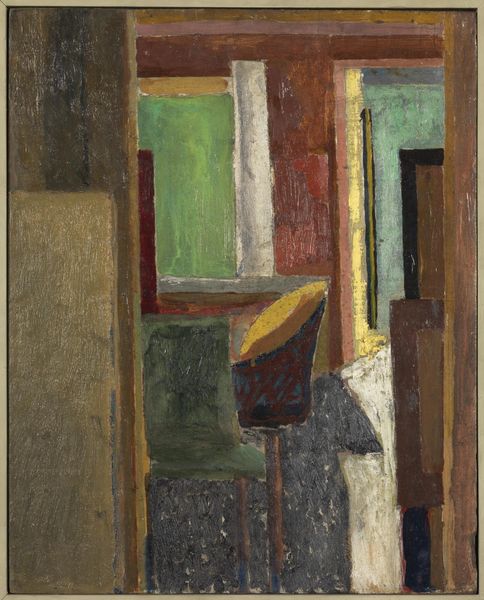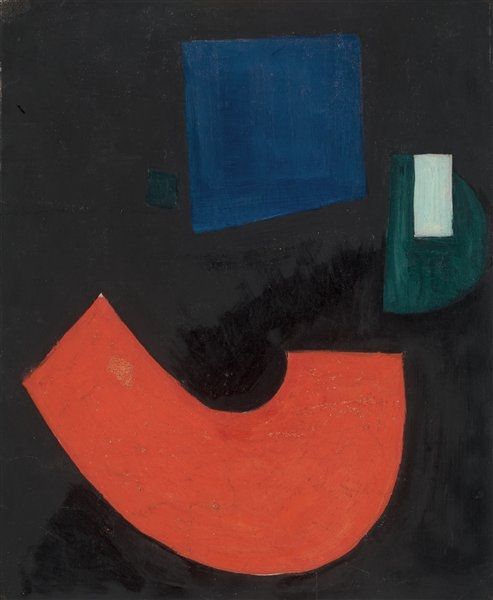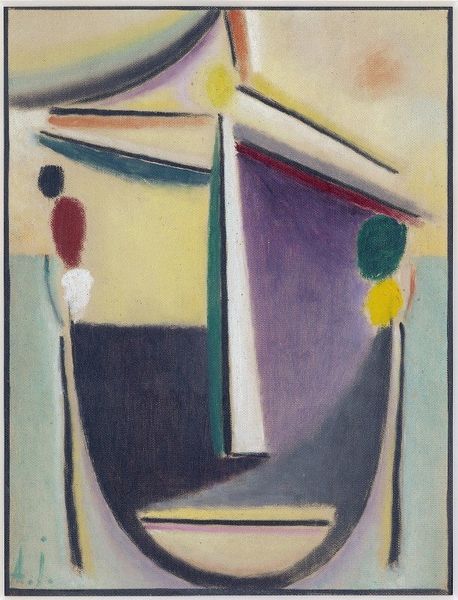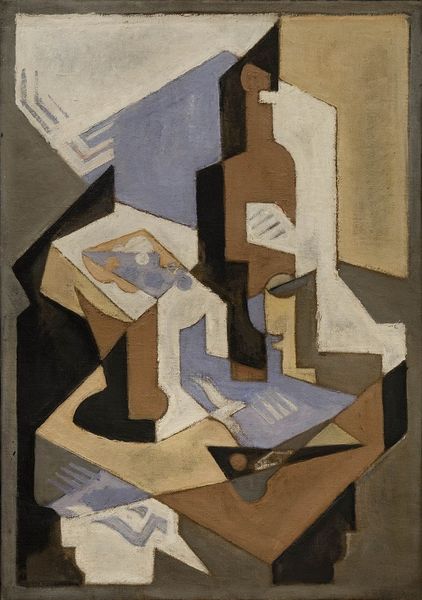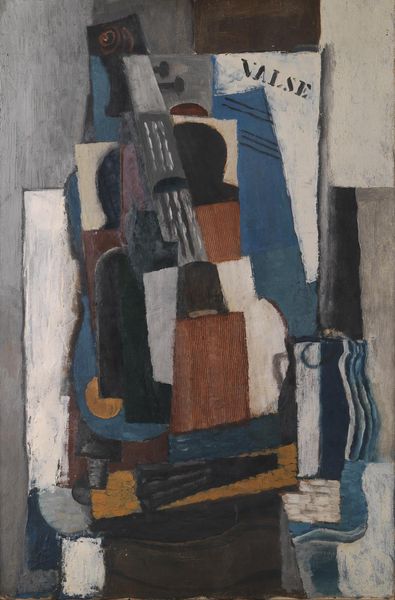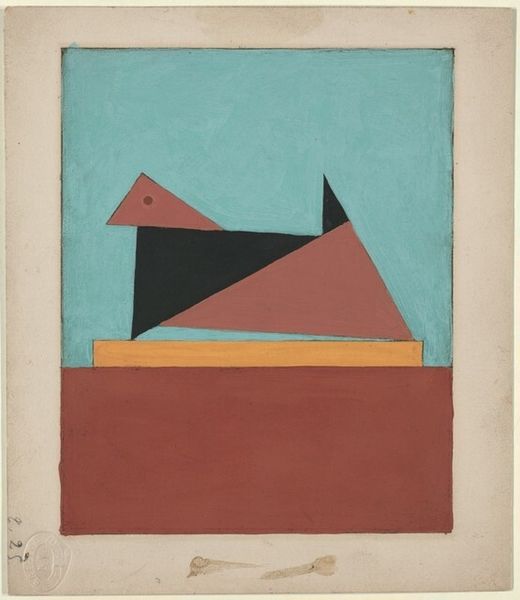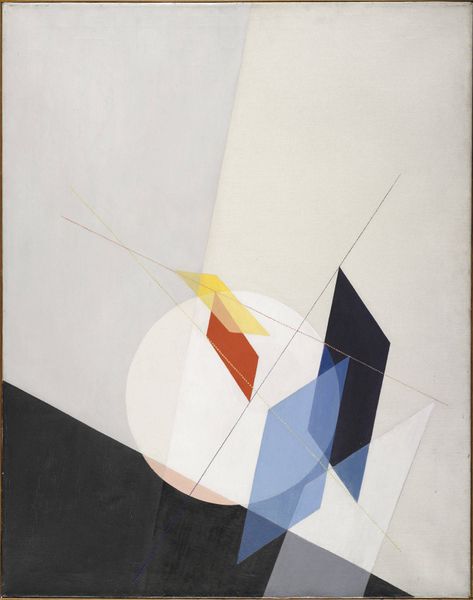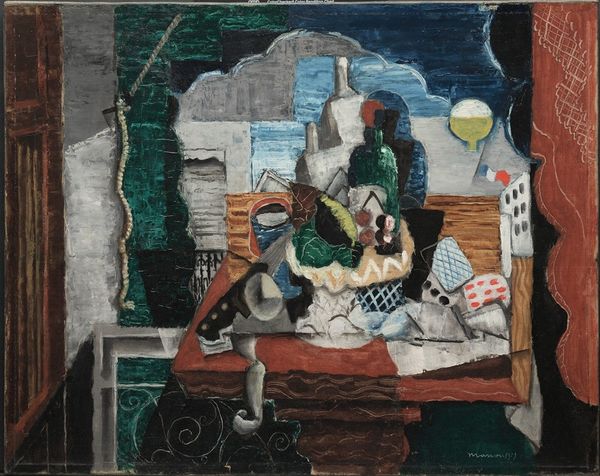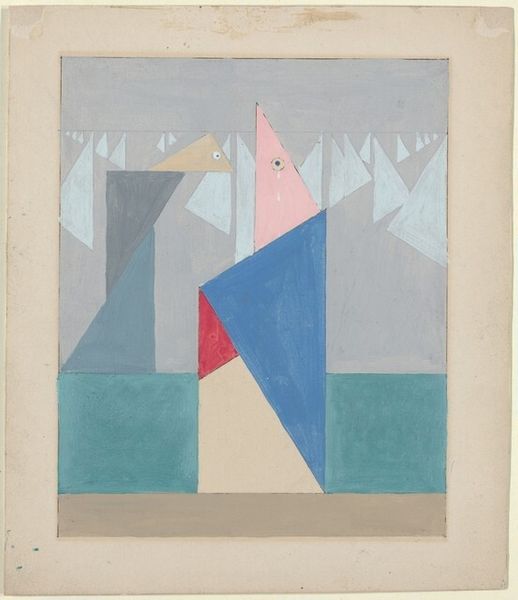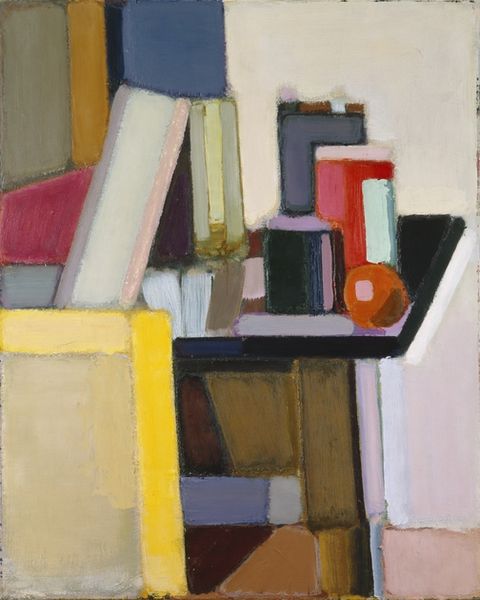
Dimensions: object: 762 x 508 mm frame: 1002 x 753 x 112 mm
Copyright: © The estate of Ivon Hitchens | CC-BY-NC-ND 4.0 DEED, Photo: Tate
Curator: Looking at Ivon Hitchens' "Triangle to Beyond," what strikes me immediately is the… awkwardness. A beautiful awkwardness, like a dream trying to assemble itself. Editor: The composition certainly disrupts conventional perspective. Note how Hitchens plays with geometric forms and flattened space. Curator: It feels like a memoryscape. That ochre hexagon, is it a sun or a portal? The maroon triangle, so grounded, yet points to something...else. Editor: The triangle, positioned above those parallel lines, suggests a dynamic relationship between stasis and movement. The textural differences further emphasize this tension. Curator: Yes! And the muted palette… It’s all so incredibly British, isn't it? That quiet, contemplative mood. Editor: Quite. Hitchens' exploration of spatial ambiguity encourages us to question our perceptions. Curator: Which is what makes it so utterly engaging, don’t you think? It invites us to wander, and wonder. Editor: Precisely. A subtle yet compelling meditation on form, space, and perhaps, the beyond.
Comments
tate 7 months ago
⋮
http://www.tate.org.uk/art/artworks/hitchens-triangle-to-beyond-t03124
Join the conversation
Join millions of artists and users on Artera today and experience the ultimate creative platform.
tate 7 months ago
⋮
In 1934 Hitchens contributed to the exhibition 'Objective Abstractions' at the Zwemmer Gallery, with artists such as Victor Pasmore and Rodrigo Moynihan. They aimed to evolve a non-representational art by focusing objectively on the process of painting. 'Triangle to Beyond', of 1936, is actually closer to non-representational painting than any of the works Hitchens had exhibited in 1934 and is probably the only three-dimensional work he ever produced. He was always intrigued by evidence of life beyond earth and the idea of a universal order and purpose. These may have been his subject on this occasion. Gallery label, September 2004

